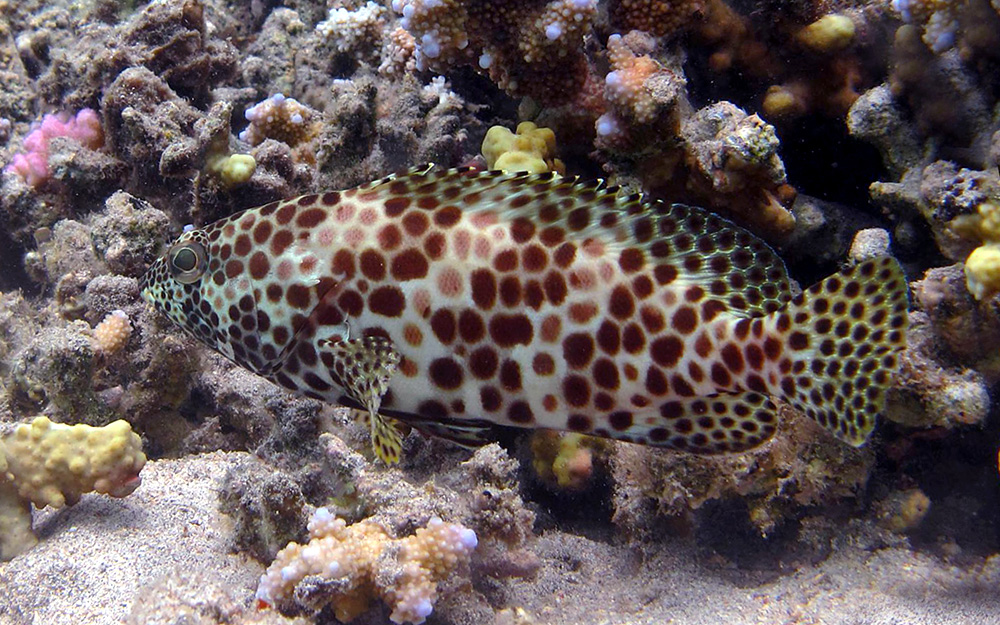Honeycomb grouper
(Epinephelus merra)

Classification
General data
The honeycomb grouper (Epinephelus merra), also known as black-spotted rock-cod, common birdwire rockcod, dwarf spotted rockcod, dwarf-spotted grouper, honeycomb cod, wire-netted reefcod or wire-netting cod, is a species of marine ray-finned fish, a grouper from the subfamily Epinephelinae which is part of the family Serranidae, which also includes the anthias and sea basses. It has a wide Indo-Pacific distribution where it is found in coastal and offshore reefs in shallow waters.
The Honeycomb grouper is one of the most common small groupers of the Indo-Pacific. It is widespread throughout the tropical waters of the Indo-Pacific from South Africa to Pitcairn, north to southern Japan, south to Lord Howe Island. A single specimen was reported from french Mediterranean waters in 2005.
It is not present in the Red Sea, the Persian gulf, coastal India and Hawaii.
Epinephelus merra reaches a maximum known length of 32 centimetres (13 in) and it is one of the smaller fish species in the genus Epinephelus.
This species has a long dorsal fin with eleven spines, 15-17 dorsal soft rays and 8 anal soft rays.
The body is ochre to light brown, stocky, with an oval profile. It is covered by small brown hexagons with pale interspaces disposed on irregular darker diagonal bands and forming a network (hence the common name of the species). These hexagonal spots are also present on all fins. The caudal fin is rounded and the interorbital area is flat, with a convex dorsal head profile.
The eyes are globular, with red-brown to black pupils.
The lower jaw is longer than the upper one and on the midlateral part of the lower jaw there are 2-4 rows of teeth.











